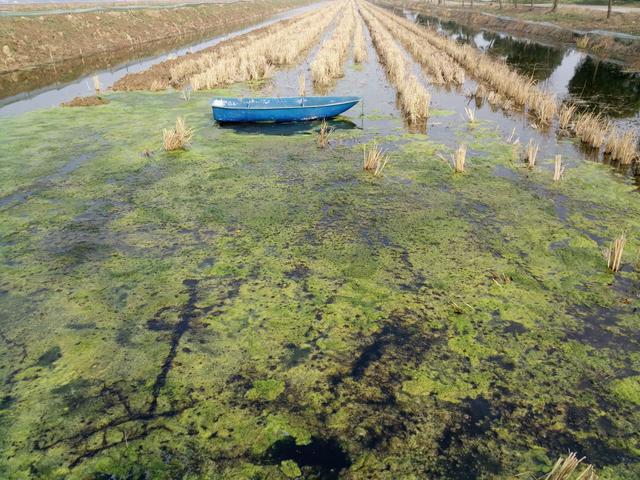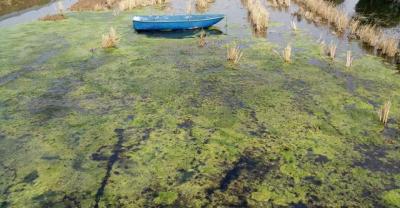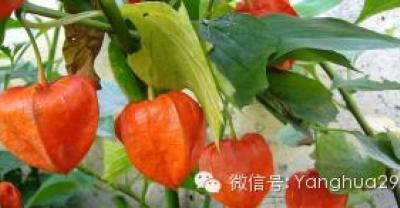Harm of moss in crayfish culture

Moss (photographed by Hong Wei)
Moss, also known as moss, is the general name of green algae such as sponges, water net algae, double star algae, plankton, and cyanobacteria such as microcystis and Cystis aeruginosa. It is a product of algae overreproduction. It can be formed in two ways: asexual reproduction and sexual reproduction. Asexual reproduction is broken into several short filaments after mechanical injury, and each short filament grows into moss. Sexual reproduction begins with the parallel proximity of two sponge filaments, which produce a process on each side of the cells of the two filaments. "protuberance" elongation, top contact, joint. The cell protoplast condenses to form a gamete, and the gamete moves into the junction tube to fuse with the gamete of another filament, forming a zygote and developing into moss.
I. the source of moss
The main sources of moss are as follows: first, due to the germination of mossy algae species in the water body, especially in newly excavated ponds; second, due to the introduction of aquatic plants and snails into the water; third, the source of water contains moss, which is brought into the intake pool; fourth, the pond water quality is clear, fertilizer and water is not in place, and algae growth is poor; fifth, improper use of drugs, resulting in the imbalance of various factors in the water. Sixth, in the winter idle season, there is stagnant water in the pond, which is not drained at the beginning of spring, or after cleaning and disinfection of the pond, the fertilizer and water work is not done well, resulting in the water body being too clear.
Second, the harm of moss
1. Most of the moss occurs in spring and early summer. When the weather gets warmer in spring, the moss will germinate in the shallow water of the clear pond. As long as the temperature is suitable, it will grow and multiply in a few sunny days, forming a mass of silk and occupying it.
Water space.
two。 Moss absorbs nitrogen, phosphorus, potassium and other nutrients in the water, consumes nutrients, and makes the water quality worse.
3. Moss affects the absorption of light energy by plankton, reduces plankton and hinders the increase of water temperature and the dissolution of oxygen.
4. The entanglement of moss and aquatic plants directly affects the growth of aquatic plants, especially when Chaetomonas aeruginosa is attached to the leaves of black algae in summer, which can not carry out photosynthesis and purify water quality, resulting in the decline of water quality.
III. Prevention and control measures of moss
The prevention and control of moss should focus on the balance of bacterial phase and algal phase in water, and the purpose should be to protect aquatic plants and promote the growth of fish.
1. Prevention
(1) after the dry pond, the pond is directly sprayed with copper sulfate or cleaned with quicklime or plant ash.
(2) choose the pond with better water quality as the water source to avoid bringing moss into the pond.
(3) change the fresh water frequently: change the water if the water quality changes color slightly.
(4) rational fertilization: reasonable fertilization according to the water quality, in order to cultivate rich natural bait, some long-lasting barnyard manure should be applied regularly to avoid the regeneration of moss, keep the water quality fat and cool, and promote the normal growth of aquatic products.
two。 Clear
Manual removal of moss is the most economical, safe, environmentally friendly and laborious method. When there is a lot of moss, it is a good way to remove part of the moss manually before using chemical drugs, which can not only reduce the drug damage, but also avoid the death and decay of a large number of moss and spoil the water quality. When a large amount of moss occurs, it needs to be removed by chemicals, which is also a common method in production.
(1) spread plant ash: it is best to use alkaline vegetable stalk or bean stalk plant ash. On a cloudy morning, plant ash is loaded in a small boat, mixed with water and sprinkled into places with dense moss, and after a few days, the moss will slowly rot.
2) skillful use of quicklime: sprinkle quicklime in the place where the algae gather to kill the algae, controlling about 150 grams per square meter for 3 times in a row, each time at intervals of 3 to 4 days.
(3) sprinkle copper sulfate: if the amount of green moss is small, you can use 50 grams of copper sulfate and 30 kg of water per mu to spray; if the amount of green moss is large, you can use 500 grams of copper sulfate per mu and put it in the gauze bag at the water inlet to make the medicine enter the seedling field with irrigation water to kill moss. Note: the toxicity of copper sulfate is proportional to the rise and fall of water temperature, but it is easy to hurt snails if you don't master a good dose.
The toxicity of copper sulfate is inversely proportional to pH value, and sometimes the bad effect is related to the strong alkalinity in the pool.
(4) sprinkle Qingtaining:
Qingtaining is a special drug for removing algae such as moss, which has the characteristics of low dosage, low toxicity and good effect. It can significantly inhibit and kill algae such as fish, shrimp, crab, shellfish culture ponds, cages and moss attached to the body surface of shrimp and crabs. The main composition of Qingtaining is 4pyrrolidine 6-diisopropylamino-2-methylthio-triazine, grayish white powder. 200 grams can be applied to 1 mu of water surface (1 meter water depth), add appropriate amount of water or mix fine soil, sprinkle evenly in the whole pool, or sprinkle in the dense growth area of moss. After the use of Taining, because algae such as moss are easy to rot and ferment in the water after death, a large amount of oxygen is consumed, and it is easy to cause hypoxia in the pond water. The dead moss and algae should be picked up to prevent hypoxia and oxygen-increasing measures should be taken at the same time. It is forbidden to use cypermethrin when there is no oxygen in the culture pond.
- Prev

Ten key points for successful breeding of broilers
Broilers are characterized by fast growth, high feed efficiency and short breeding cycle, which can be listed in 7 to 9 weeks. Broilers grow fast in the early stage, this is broilers.
- Next

A complete collection of pond cleaning methods for aquaculture
The source and main composition of quicklime-1-quicklime are natural rocks mainly composed of calcium carbonate, such as limestone, chalk, dolomitic limestone, etc.
Related
- On the eggshell is a badge full of pride. British Poultry Egg Market and Consumer observation
- British study: 72% of Britons are willing to buy native eggs raised by insects
- Guidelines for friendly egg production revised the increase of space in chicken sheds can not be forced to change feathers and lay eggs.
- Risk of delay in customs clearance Australia suspends lobster exports to China
- Pig semen-the Vector of virus Transmission (4)
- Pig semen-the Vector of virus Transmission (3)
- Five common causes of difficult control of classical swine fever in clinic and their countermeasures
- Foot-and-mouth disease is the most effective way to prevent it!
- PED is the number one killer of piglets and has to be guarded against in autumn and winter.
- What is "yellow fat pig"? Have you ever heard the pig collector talk about "yellow fat pig"?

